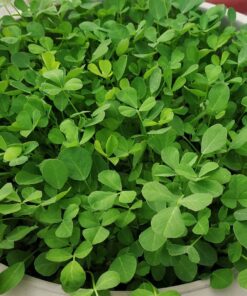-
×
Methi Seeds Fenugreek Seeds 100 seeds
1 × ₹40.00
Subtotal: ₹40.00
 Methi Seeds Fenugreek Seeds 100 seeds
Methi Seeds Fenugreek Seeds 100 seeds
Subtotal: ₹40.00
 Methi Seeds Fenugreek Seeds 100 seeds
Methi Seeds Fenugreek Seeds 100 seeds
Subtotal: ₹40.00
₹40.00
In stock
Carrots Kuroda Seeds You can grow carrots all year round and they are so simple! Just sow carrot seeds regularly for a year-round crop.
Carrot seeds are an easy and rewarding crop to grow, great for encouraging children to eat their vegetables! With so many varieties of this popular vegetable available, carrots can be grown in beds, containers, and even window boxes making them suitable for gardens of any size.
Carrots are a popular root vegetable that is easy to grow in sandy soil. They are resistant to most pests and diseases and are a good late-season crop that can tolerate frost.
Not all carrots are orange; varieties vary in color from Purple to black to white. Spinach can be a good companion
| Number of Seeds | 70-100 |
|---|---|
| Sowing month | Aug to Jan |
| Sowing temperature | 20-35C |
| Blooming month | Dec to April |
| Sun | Full |
Orange carrots are the traditional standard, but you can try growing white, yellow, crimson, or even purple-skinned carrots, too.
More important than color, though, is choosing the right root size and shape to suit your soil. Carrot size and shape vary by type, and there are five major categories. Ball-type, Chantenay, and Danvers carrots have blocky shapes that can handle heavy or shallow soil, while slender Nantes and Imperator carrots need deep, loose soil.
| Sunlight | Soil | Water | Temperature | Fertilizer |
|---|---|---|---|---|
| full sun, Will tolerate very light shade. | Requires well-drained soil. Good quality roots require plentiful moisture and soil that is deep, loose, free of stones, and high in organic matter. Roots can become twisted and forked in heavy, stony soil. Prefers a pH of 6.0 to 6.8 but can tolerate 5.5 to 7.5. Requires only moderate nitrogen. Too much can cause root branching. | Average | For Germination 45-85 F For growth 60-65 F | Fertilize 5-6 weeks after sowing.Apply any fertilizer |
| Color | Red |
|---|---|
| Germination Level | Easy |
| Growth Pattern | Under soil |
| Hybrid or Open Pollinated | Hybrid |
| Ideal location | Full sun |
| Origin Country | Japan |
You must be logged in to post a review.
Reviews
There are no reviews yet.